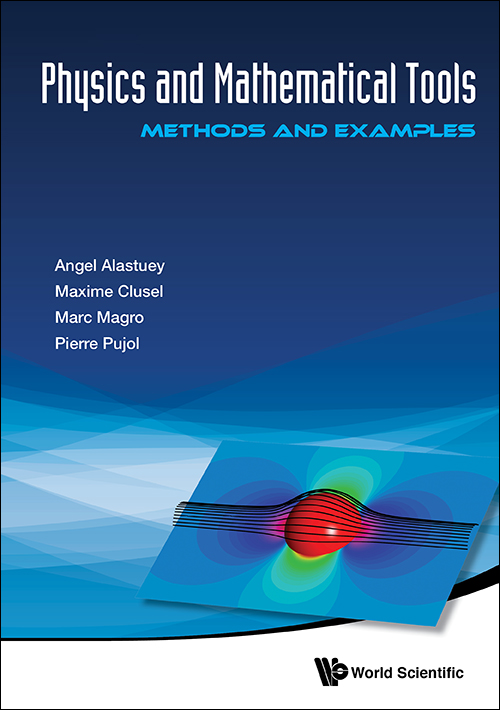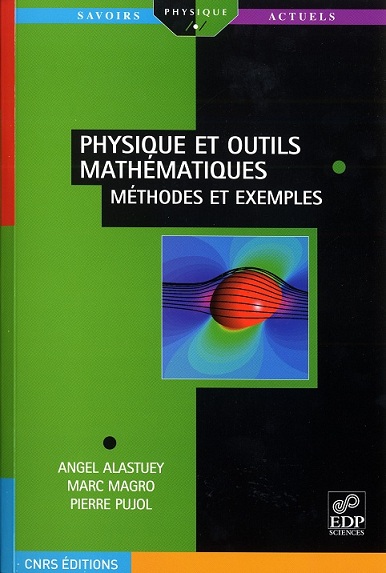Physics and Mathematical tools: methods and examples
With A. Alastuey, M. Clusel and P. Pujol
World Scientific, 340 pages, (2016)
The aim of this book is to present some general theoretical methods, which turn
to be quite useful for studying a large variety of physical situations. Those methods
refer to the analytical properties of linear response functions, the use of Green
functions for solving linear partial differential equations, and the saddle-point
approximation of ordinary and functional integrals. As illustrated through the
considered examples, those methods can be successfully applied to many problems
in electromagnetism, classical or quantum mechanics, statistical physics or field
theory, etc. In fact, all fields of physics are concerned by such applications. This
motivated a transversal presentation of the methods within a general framework which
is not specific to a particular topic.
That unifying point of view determines the
structure of each chapter. Their first parts are devoted to the derivation of general
properties which shed light on the universal nature of some mechanisms. Various examples
are then presented in the second part of each chapter. Beyond their own interest, they
provide a deeper understanding of the general mechanisms at work, while they also allow
the reader to make connections between different problems. Exercises are proposed in the
third part, while the key points leading to their solutions are sketched at the end of the
book. Through the whole presentation, we systematically emphasize the physical arguments
which sustain the derivations, while mathematical difficulties and subtleties are always
quoted. The presented methods are very useful in physics, beyond the elementary tools
like differential calculus or complex analysis for instance.

Physique et outils mathématiques : méthodes et exemples
Avec A. Alastuey et P. Pujol
EDP Sciences et CNRS Editions, 390 pages, (2009)
Cet ouvrage expose des méthodes et des outils mathématiques
omniprésents en physique et en sciences de l'ingénieur : fonctions de
réponse, relations de Kramers-Kronig, fonctions de Green, méthode du col.
La présentation privilégie arguments et interprétations physiques
sans pour autant perdre la rigueur indispensable. Des introductions synthétiques
en décrivent les caractéristiques essentielles, établissant
ainsi connexions et analogies entre différents domaines. Elles sont
complétées d'une vingtaine d'applications portant sur des
domaines variés de la physique (électromagnétisme,
hydrodynamique, physique statistique, mécanique quantique)
qui sont traitées en détail, et accompagnées d'exercices avec
des éléments de solution.
La lecture autonome de l'ouvrage est facilitée par
une présentation pédagogique évitant les
développements trop techniques, ainsi que par la description
schématique d'outils importants en annexe. Le public
concerné comprend naturellement les étudiants physiciens
en Master ou en Doctorat, quelque soit leur spécialité.
Cet ouvrage étant également con\c cu comme un manuel,
il s'adresse aussi aux chercheurs, enseignants, élèves
ingénieurs et ingénieurs.


